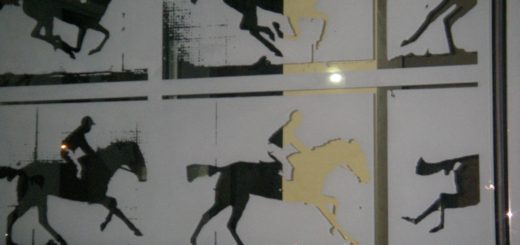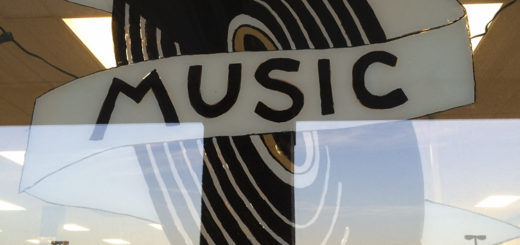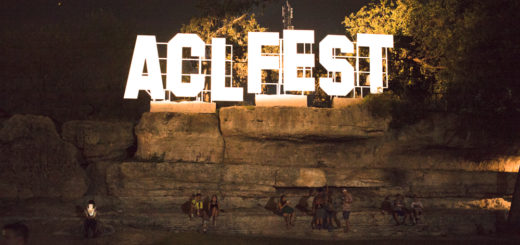Why can’t SXSW get beyond bro-culture?
Dallas Morning News
March 16.2017
As fashion shows in Paris bring us next season’s trends in wearables, the South by Southwest conference has built the reputation for unveiling future ideas. Unsigned bands play in Austin before headlining music festivals, major studios screen films at the festival before release and tech influencers bring us advance models of seemingly magical devices.
The money and hoopla spent to introduce next season’s notions to the public turns SXSW into a pop-up entertainment complex. Last week in Austin, you could get curly fries from a temporary installation of Los Pollos Hermanos (a re-creation of the fast food location from the show “Breaking Bad”), shake out a toy car from a sponsor’s vending machine with a car-size car in the display window, or watch surfing demonstrations at the Animal Kingdom pop up beach. Samples of dark Guinness beer were pressed into palms on the SXSW trade show floor, a robot gave my friend a pair of rainbow socks, while a giant white buffalo with steaming eyes loomed over an installation promoting an upcoming cable television series based on Neil Gaiman’s 2001 novel “American Gods.” SXSW is a Coney Island of the intellect featuring a smorgasbord of shiny giveaway gimcracks, free tacos and famous faces. The different tracks of the festival (film, music, interactive) are kind of like the different parks at Disney World, each with a slightly different focus under the same corporate umbrella.

For all of the whiz-bang surface of the SXSW conference and the talk of a shiny new future, a lot of the razzamatazz is deeply rooted in an ongoing embrace of the traditional structures of the past. Outside of panels about tech industry diversity, the conference appears to be largely white male and committed to a future that looks suspiciously like the show “Mad Men,” tethered to the 20th century.
This matters because what happens at this festival sets the tone of popular culture around the world. It’s hard to have this many influencers in one place and not make any impact, especially as people trek to Austin to book their music and film festivals across the world. (My own Austin household during SXSW swelled to include a programmer for a Canadian film festival sleeping on a sofa and a European journalist crashing in a fancy tent in my backyard.)
SXSW is surely taking steps to be a voice for diversity, particularly in the tech industry. Panels on diversity are appreciated, if a sideshow to the main events. And attendance data don’t exactly support my concern about a bro culture. While figures from this year’s SXSW aren’t yet available, 2016 figures from the festival show that 55 percent of 2016 attendees were male, though that doesn’t include the many people who show up for the unofficial and free parts of SXSW.

Still, the values of the 20th century post-war economic boom, which gave us classic car culture, suburban sprawl and a generation of baby boomers, are on display at SXSW. The era’s cultural ideal centered on the husband/father working for a large corporation and easily supporting his pretty wife and several lovely children. That mid-20th century world was a man’s world, and legally it was white man’s world, as segregation was the law and women were often fired once they were married or started their families. When I heard President Donald Trump’s campaign slogan, “Make America Great Again,” this is the America I understood he was referencing.
Car culture on display
This 20th century structure at SXSW is embodied in the prominence of the car company Mazda. The automobile was one of the most iconic and beloved products of the 20th century. SXSW even has a “Mazda Studio” venue, where I spent a long time mesmerized by an artistic installation comprised of half of a car covered with lights seemingly synced to flash in time to the live bands.

I spent one 20th century themed evening of the festival chatting with an artist friend at the Grateful Dead party, which took place at the Resistance Radio Headquarters. (That’s the same Resistance Radio that made headlines last week when some Trump supporters mistook its broadcast, which was a promo for a new season of the very-much-20th-century television series “The Man in the High Castle,” as a genuine station.) The party was given to promote the release of the four hour long film “Long Strange Trip” about the 60s band. Sitting on Amazon’s comfortable new sofas and admiring fresh red roses prettily arranged in ceramic skulls for the fancy event, my friend told me about following the Dead in the 80s and making t-shirts to sell to support himself. Thirty-five years later, the corporate sponsor gave me a baseball t-shirt custom screen printed with a Grateful Dead logo and the promo “Long Strange Trip, Amazon Prime Video.” (And don’t forget that as counterculture as the Dead were, the band was mostly comprised of dudes.)

Many films at the festival display the post-war conception of masculinity. Consider the charming new film “Becoming Bond,” which tells the story of George Lazenby, the onetime Australian car mechanic who played 20th century icon James Bond. In the film, a still handsome and charmingly roguish Lazenby recounts having oodles of fun in swinging 60s London. While the film is engaging, it’s hard to ignore that it’s about a man doing manly things in a story directed by a man.
This mid-20th century ideal of masculinity is also clear in the SXSW film “Fits and Starts,” in which comedian Wyatt Cenac (known for his onetime gig as a correspondent on The Daily Show with Jon Stewart) plays a writer overshadowed by the his wife, a best-selling literary juggernaut. Though the film was directed by Laura Terruso, the comedy comes from turning the expectation that the man is the more financially and professionally successful partner in a relationship. A movie about a woman writer married to a more successful male writer might be just be a movie.
Diversity side shows
You might expect the tech portion of the festival to embrace a new cultural paradigm. Instead, this 20th century American model of the world dominated by white men is evident in tech industry events, too. The festival does a bang-up business in tech panels about diversity, while lots of white dudes hold the checkbooks and fancy jobs.

Lack of diversity in the tech industry isn’t from lack of effort from many folks. During SXSW I saw several panels about how to get more women into the tech pipeline, about how to get more black women and people of color “into the funnel,” and about how to keep them from dropping out of the “leaky pipeline” on their way to the top of the corporate structure.
The audience at a panel called “Beyond Brogrammers: Diversity in Tech & VC” was filled with people who were black and brown and female, who wanted to know how they could get some of the money sloshing around the tech industry, which involves accessing venture capital. (Venture capital is the thing that takes your brilliant tech idea from a daydream at your day job into the homes of millions.) During the panel I learned that less than 6 percent of venture capitalists are women. If you are the one writing checks, wouldn’t you be more inclined to give money to people who look more like you?) The noses I see at SXSW pressed against the metaphorical glass at the tech industry panels haven’t been the white male noses.
The 20th century model extends to the music end of SXSW. While pop music is full of female divas like Cher, Beyonce, Britney Spears and Katy Perry, that isn’t the model in the rock music scene. That isn’t too surprising, as rock-n-roll is a product of the mid 20th century.

So many of the rock bands at SXSW look the same: Four skinny-ish white dudes who look like they’ve slept in their outfits. Many appear to need a shower, some vegetables and a haircut. At a rock show the “sound guys” are often guys, the venue’s crew is often male. On the media end of things, the on-air radio DJs are often male, the concert photographers at shows are often male. (One dark blessing: at the music industry nerd shows that I go to, there’s rarely a line for the ladies’ room.)
Just as in the tech part of the festival, there are lots of diversity events during the music section of SXSW, including “Asians in the Music Biz Meet Up” and “A League of Their Own: Success as a Female Entrepreneur.” But these are side shows. The featured music interviews of dudes being interviewed by other dudes include Mick Fleetwood (of Fleetwood Mac) interviewed by David Fricke of Rolling Stone and Sammy Hagar interviewed by Mike Snider of USA Today.
Beyond bro-culture
SXSW is making a solid effort of diversifying the official programming. This year’s film keynote was director Lee Daniels (who directed “The Butler”) and an interview with Cindy Wilson of the 80s dance band, the B-52’s, were good steps.

I appreciated the charming signs in the Austin Convention Center bathrooms: “SXSW pledges to continue to make our event inclusive, diverse and forward-thinking. We oppose discriminatory legislation such as the Texas SB6 ‘bathroom bill’ and support civil rights for all persons everywhere. (Now don’t forget to wash your hands.)” These are great steps toward turning this into a modern festival of ideas, rather than a place where the panels about women are primarily advice on how to be a woman in a male-dominated industry.
Why should it matter that the buzzed-about future that SXSW offers us is a mid-20th century worldview? Isn’t that just the way the world works? Shouldn’t I just put on my big girl Spanx and play the 20th century hand I’ve been dealt?
To paraphrase author Dan Lyons in his SXSW talk “Disrupted: Ending Bro Culture and Bias in Startup-Land,” maybe we’d all make a little more money, have fewer risks and generally have more fun if the American culture that that SXSW is mirroring wasn’t such a bro-down.

For example, he said, ride-share company Uber has faced a public relations nightmare since a blog post by former employee Susan Fowler detailed the sexual harassment she experienced at the company. Fowler’s post prompted other articles about sexism at Uber. This might have been avoided if Uber had treated female staff better and had more women higher up the power structure.
I was dejectedly walking around the first night of the SXSW music showcases, pondering the way that this 20th century model tenaciously clings to the festival, when sounds from a SXSW music showcase stopped me. Popping into the club I was shocked to find three women on stage and a solid crowd. The all-female Swedish trio Baskery was making the crowd jump around with enthusiasm.
It will take more than three guitar-wielding Swedes to save us from the clutches of this 20th century paradigm. But they offer hope that someday the entrenched power structures that are still visible at this festival will dissipate like the smoke from the White Buffalo at the “American Gods” popup.
This article originally appeared in the Dallas Morning News.






















